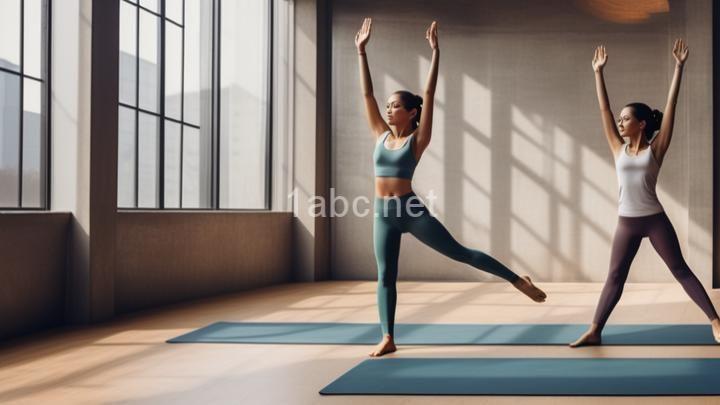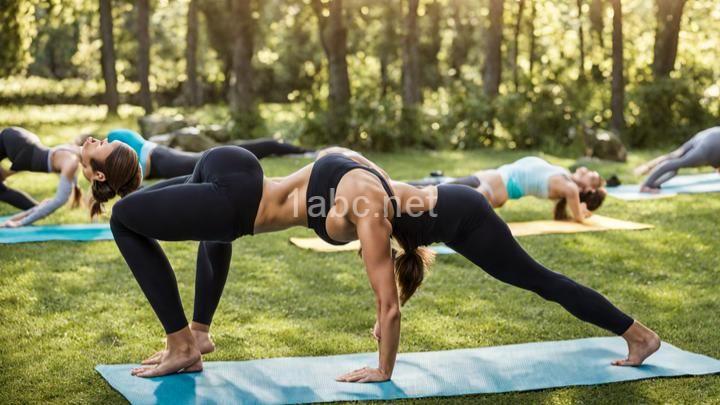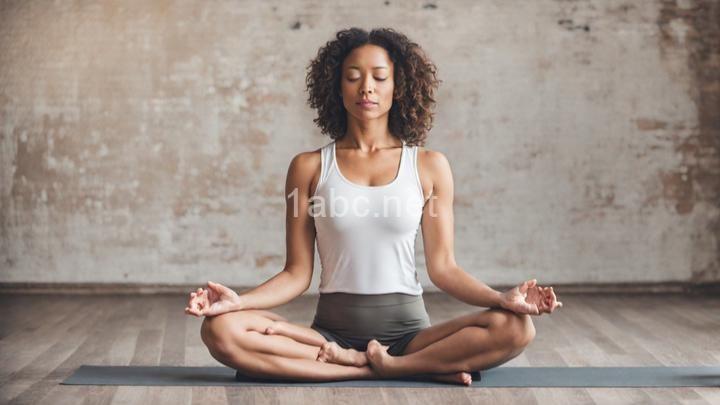Yoga for Health: Simple Poses to Improve Flexibility and Well-being

Introduction:
Hey there, fellow health enthusiasts! Today, we're diving into the wonderful world of yoga and how it can transform your flexibility and overall well-being. Yoga has been practiced for centuries and has numerous benefits, including increased flexibility, improved strength, and a deeper connection between the mind and body. So, let's roll out our yoga mats and explore the incredible benefits of yoga!
I. The Importance of Flexibility in Daily Life
Flexibility plays a crucial role in maintaining a healthy body. It allows us to move freely and perform daily tasks with ease. Imagine trying to tie your shoelaces or reach something on a high shelf with stiff muscles – not an ideal situation, right? Additionally, lack of flexibility can lead to injuries and limit our range of motion, which can impact our overall quality of life. So, it's time to give those muscles some love and attention!
II. Understanding Yoga: A Holistic Approach to Health
Before we delve into the poses, let's take a moment to understand what yoga is all about. Rooted in ancient Indian philosophy, yoga is much more than just physical exercise. It is a holistic practice that encompasses physical postures (asanas), breath control (pranayama), and meditation. The word "yoga" itself means union – the union of mind, body, and spirit. Through yoga, we can achieve a sense of balance and harmony in our lives.
III. Simple Yoga Poses for Flexibility
Now, let's explore some simple yoga poses that can help improve your flexibility. Remember to listen to your body and only go as far as feels comfortable. It's not about achieving the perfect pose, but rather about enjoying the journey and the benefits it brings.
A. Cat-Cow Pose
Start on all fours, with your hands directly under your shoulders and knees under your hips. As you inhale, arch your back and lift your tailbone, allowing your belly to sink towards the mat. This is the cow pose. As you exhale, round your spine, tucking your tailbone and chin towards your chest. This is the cat pose. Flow between these two poses, synchronizing your breath with your movements.
The cat-cow pose is a gentle way to warm up the spine and increase its flexibility. It also helps relieve stress and tension in the back while improving posture.
B. Downward-Facing Dog Pose
Begin on all fours and then lift your hips up high, straightening your legs and forming an inverted V shape. Press your palms firmly into the mat, spreading your fingers wide. Relax your head and neck, allowing them to hang freely. Feel the stretch in your hamstrings, calves, and shoulders.
The downward-facing dog pose is a staple in yoga practice. It strengthens the arms and legs while stretching the entire backside of the body. It's a great pose to improve flexibility in the hamstrings and calves.
C. Triangle Pose
Stand with your feet wide apart, around 3-4 feet. Turn your right foot out to the side and align your right heel with the arch of your left foot. Extend your arms out to the sides, parallel to the ground. As you exhale, reach your right hand towards your right foot, keeping your chest open and your left arm reaching up towards the ceiling. Gaze towards your left hand.
The triangle pose is excellent for opening up the hips, stretching the hamstrings, and strengthening the legs. It also improves balance and focus.
D. Child's Pose
Kneel on the mat with your big toes touching and your knees hip-width apart. As you exhale, lower your torso between your thighs and rest your forehead on the mat. Extend your arms forward and relax them by your sides. Breathe deeply and surrender into this gentle and restorative posture.
Child's pose is a perfect way to release tension in the back, neck, and shoulders. It provides a sense of comfort and helps calm the mind.
IV. Incorporating Yoga into Your Daily Routine
Finding time for yoga can sometimes be a challenge, especially in our busy lives. However, even a few minutes of practice each day can make a significant difference. Start small and gradually increase your practice as you feel comfortable. You can try incorporating yoga into your morning or evening routine, or even squeeze in a quick session during your lunch break. Remember, consistency is key!
V. Other Benefits of Yoga for Well-being
Apart from flexibility, regular yoga practice has a myriad of other benefits for your overall well-being. It helps reduce stress and anxiety, promotes relaxation, and improves sleep quality. Scientific studies have also shown that yoga can boost immune function, increase energy levels, and enhance cognitive function. So, not only will you be bending and stretching, but you'll also be boosting your overall health.
Conclusion:
Flexibility and well-being go hand in hand, and yoga is a fantastic way to achieve both. We've explored some simple poses that can improve your flexibility and provided tips on incorporating yoga into your daily routine. Remember, yoga is not about perfection, but about finding joy in the practice and listening to your body. So, grab your mat, strike a pose, and experience the incredible benefits of yoga for yourself. Thank you for joining us on this journey, and may your yoga practice bring you strength, flexibility, and inner peace. Namaste!
FREQUENTLY ASKED QUESTIONS
Who is Yoga for Health suitable for?
Yoga for Health is suitable for a wide range of individuals, regardless of age or fitness level. Whether you are a beginner or experienced practitioner, yoga can benefit you both physically and mentally. It is particularly beneficial for those looking to improve flexibility, build strength, reduce stress, and enhance overall well-being. Whether you are seeking a gentle practice or a more vigorous workout, there are various styles and modifications available to cater to your specific needs and goals. So, whether you're a busy professional, a senior citizen, an athlete, or someone recovering from an injury, yoga can be a great addition to your health and wellness routine. Give it a try and experience the positive effects it can have on your mind, body, and spirit.
Do I need any prior yoga experience to participate?
No, prior yoga experience is not necessary to participate in our yoga classes. Our classes cater to all levels, including beginners. Our instructors are skilled at providing modifications and variations to accommodate different abilities and experience levels. Whether you're a seasoned yogi or brand new to yoga, our classes are designed to help you safely and comfortably explore the practice at your own pace. So, feel free to join us and give yoga a try, regardless of your previous experience!
How often should I practice Yoga for Health?
To maintain your health through yoga, it is recommended to practice regularly. Ideally, aim for at least three to five sessions per week. This frequency allows your body to benefit from the physical and mental aspects of yoga. However, it's important to listen to your body and find a practice schedule that suits your individual needs and lifestyle. If you're just starting out, you can begin with shorter sessions and gradually increase the duration as you become more comfortable. Remember, consistency is key when it comes to reaping the benefits of yoga for your overall well-being.
Can Yoga for Health help with stress relief?
Yes, practicing yoga can definitely help with stress relief. Yoga combines physical postures, breathing exercises, and meditation techniques, which work together to promote relaxation and reduce stress levels in the body and mind. The gentle stretching and movement in yoga help release tension stored in the muscles, while the deep breathing exercises calm the nervous system and increase oxygen flow to the brain, promoting a sense of calm and well-being. Additionally, the mindfulness aspect of yoga encourages you to focus on the present moment, letting go of worries and anxieties. By incorporating yoga into your routine, you can cultivate a sense of inner peace and resilience, allowing you to better manage stress in your daily life.



